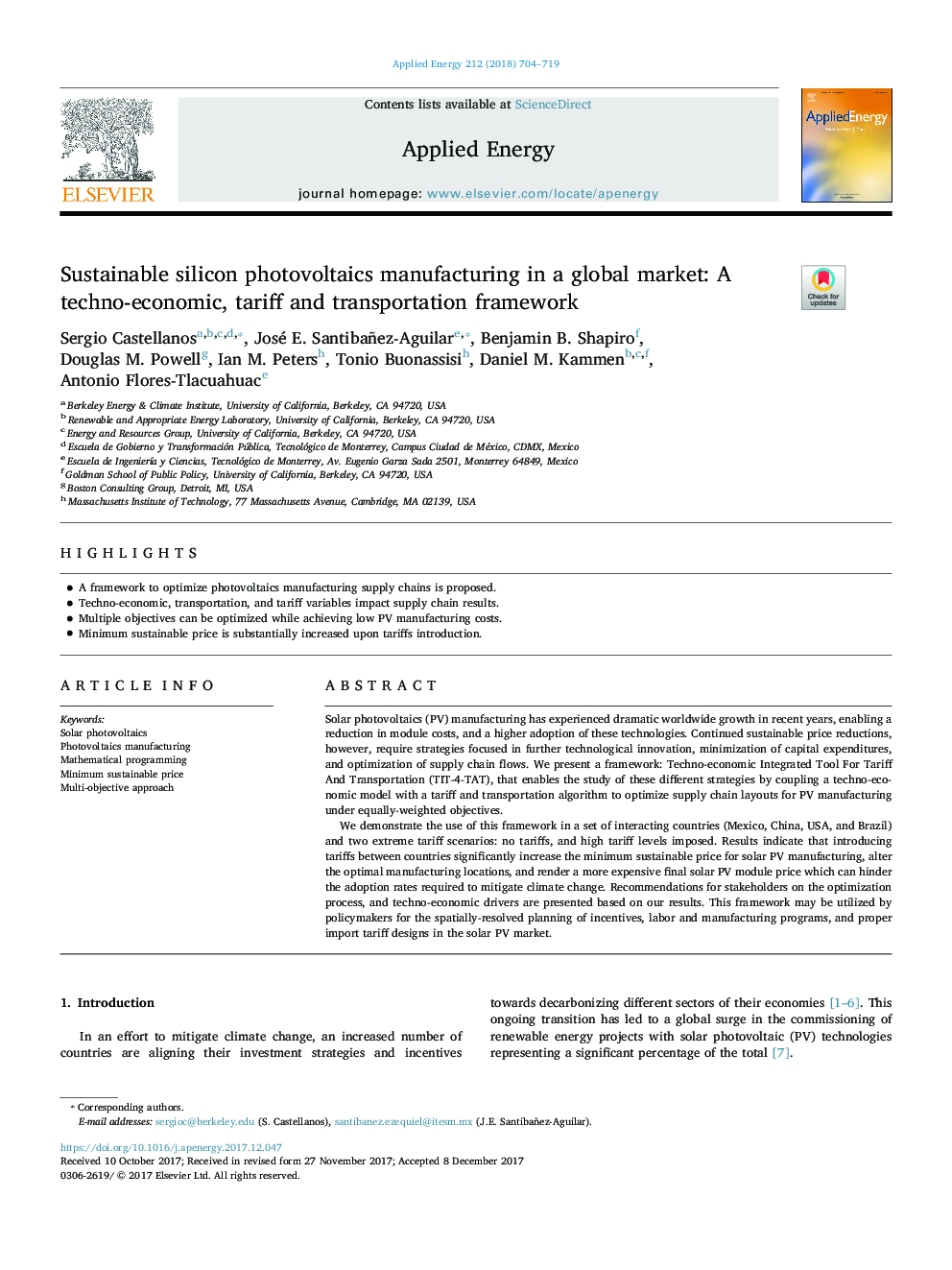| Article ID | Journal | Published Year | Pages | File Type |
|---|---|---|---|---|
| 6680987 | Applied Energy | 2018 | 16 Pages |
Abstract
We demonstrate the use of this framework in a set of interacting countries (Mexico, China, USA, and Brazil) and two extreme tariff scenarios: no tariffs, and high tariff levels imposed. Results indicate that introducing tariffs between countries significantly increase the minimum sustainable price for solar PV manufacturing, alter the optimal manufacturing locations, and render a more expensive final solar PV module price which can hinder the adoption rates required to mitigate climate change. Recommendations for stakeholders on the optimization process, and techno-economic drivers are presented based on our results. This framework may be utilized by policymakers for the spatially-resolved planning of incentives, labor and manufacturing programs, and proper import tariff designs in the solar PV market.
Related Topics
Physical Sciences and Engineering
Energy
Energy Engineering and Power Technology
Authors
Sergio Castellanos, José E. Santibañez-Aguilar, Benjamin B. Shapiro, Douglas M. Powell, Ian M. Peters, Tonio Buonassisi, Daniel M. Kammen, Antonio Flores-Tlacuahuac,
